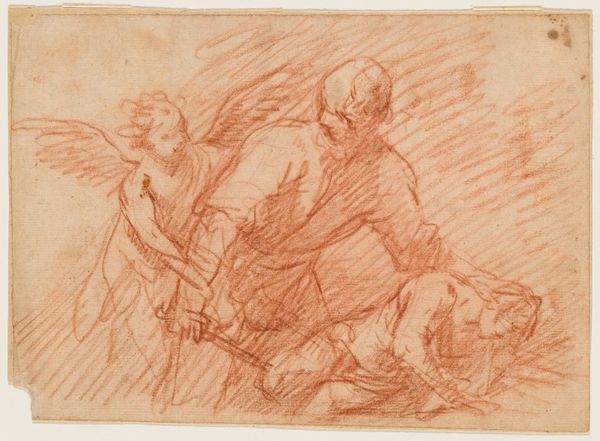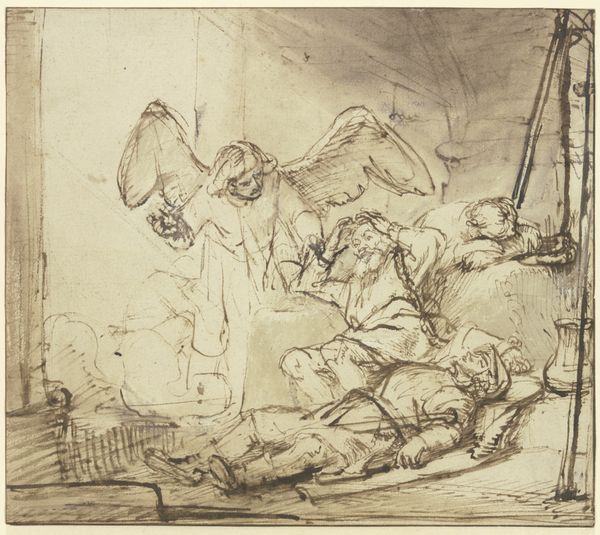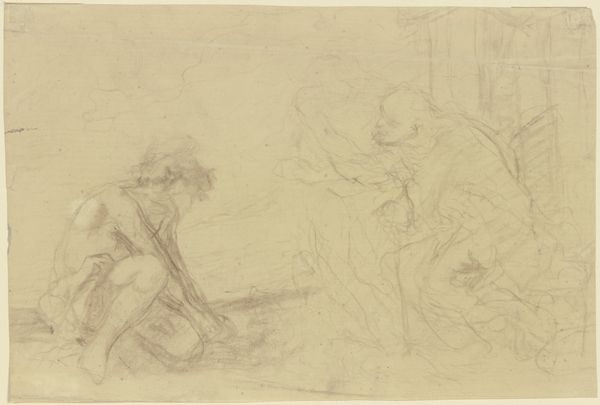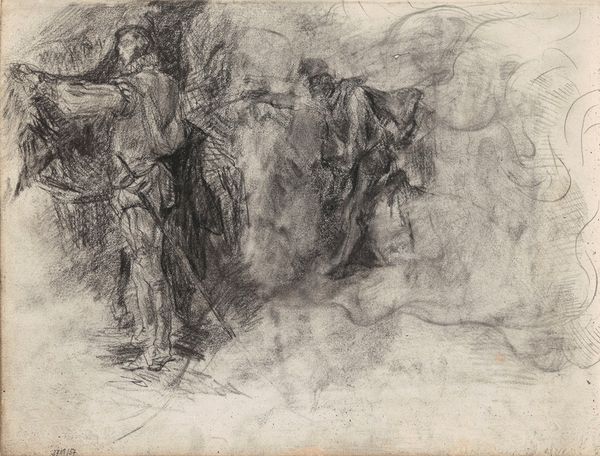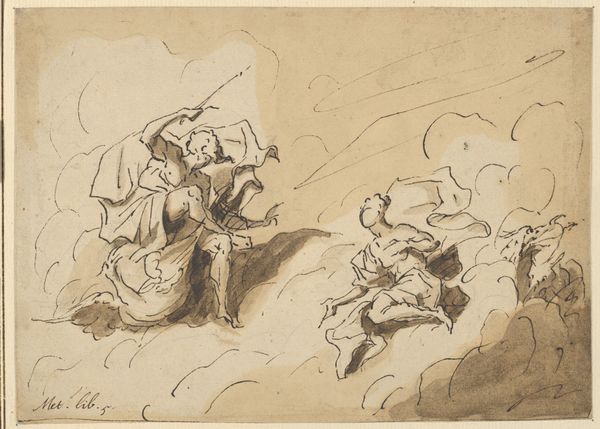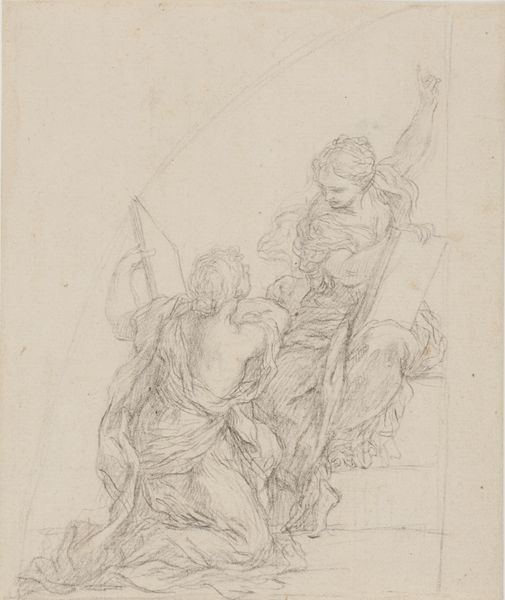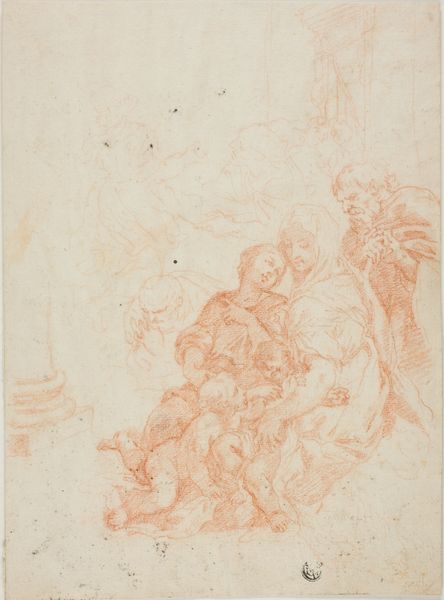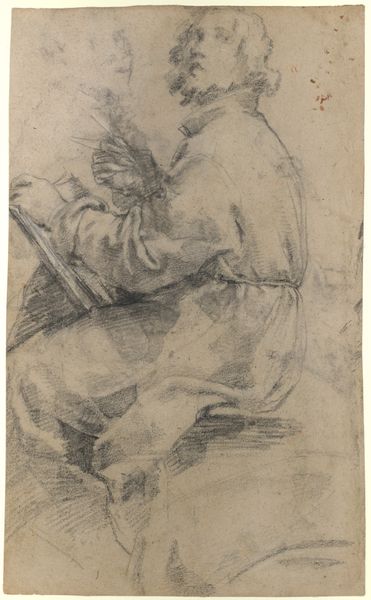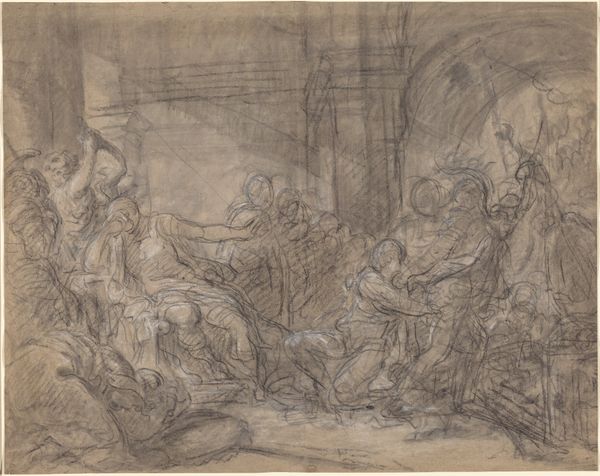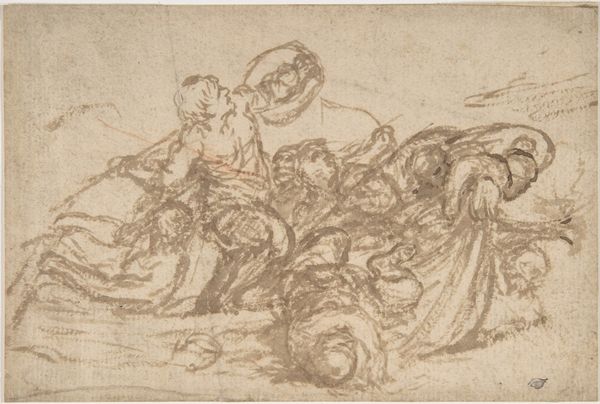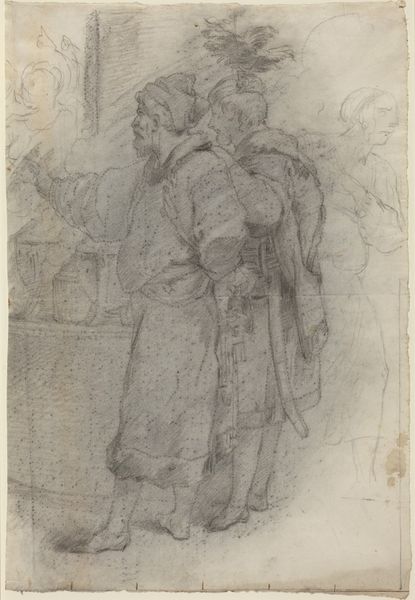
drawing, red-chalk
#
drawing
#
red-chalk
#
pencil drawing
#
classicism
#
genre-painting
#
academic-art
Copyright: Public Domain
Editor: Here we have a red-chalk drawing entitled "Two Washerwomen," by Jean-Baptiste Greuze, housed here at the Städel Museum. The texture is really captivating, almost dreamlike. How do you interpret this work? Curator: It's crucial to consider Greuze within the context of 18th-century French society. The image presents washerwomen, members of a marginalized labor class. Given academic art's preference for historical and mythological subjects, we have to ask ourselves: what statement does it make? Is it romanticizing poverty, or acknowledging women's labour? Editor: It could be read as either. There's a certain grace in the lines, but also the evident struggle in their postures. Is the "genre-painting" aspect deflecting some deeper political subtext? Curator: Precisely! Consider the intellectual circles of the time. Enlightenment ideals were challenging established norms. Greuze may have been subtly critiquing social inequalities by focusing on everyday life. Notice, too, how the drawing elevates their humanity, diverging from traditional depictions. Editor: It feels like a quiet rebellion, if that's the case. Something powerful in its understatement. Curator: I agree. Greuze gives a glimpse of an existence usually ignored by the elite. These pieces served not merely as representations but as a call for awareness and understanding. Editor: It's amazing how a simple drawing can hold so much social and political weight. Curator: Art offers a valuable space for exploring power structures and lived realities across history. Each stroke tells a story far beyond the surface. Editor: This deeper historical context truly changes how I perceive it. Thanks so much for sharing.
Comments
No comments
Be the first to comment and join the conversation on the ultimate creative platform.
